Generation 4 Jimny history – an Australian perspective
This is part of a broader article going through the history of the Jimny in Australia. Here we focus on the retro-styled and modern technology boasting generation 4 Jimny, built on the underpinnings of the previous generations. Excitement about this model means there’s a bit more literature out there, plus I can more heavily lean on available other sources like promotional brochures and the like
You are here: Australian Jimny History -> Generation 4
Next: Australian Jimny History
Previous: Australian Jimny History -> Generation 3
Sections
- Announcement and fanfare
- Design and target market
- Updated safety features
- Second-stage manufacturer GVM upgrade
- Sales figures
- LWB generation 4
- EV generation 4
Announcement and fanfare
The generation 4 Jimny was announced in 2018, with delivery from late January 2019 in Australia.

The first road test articles didn’t really start appearing until Feb or March 2019.
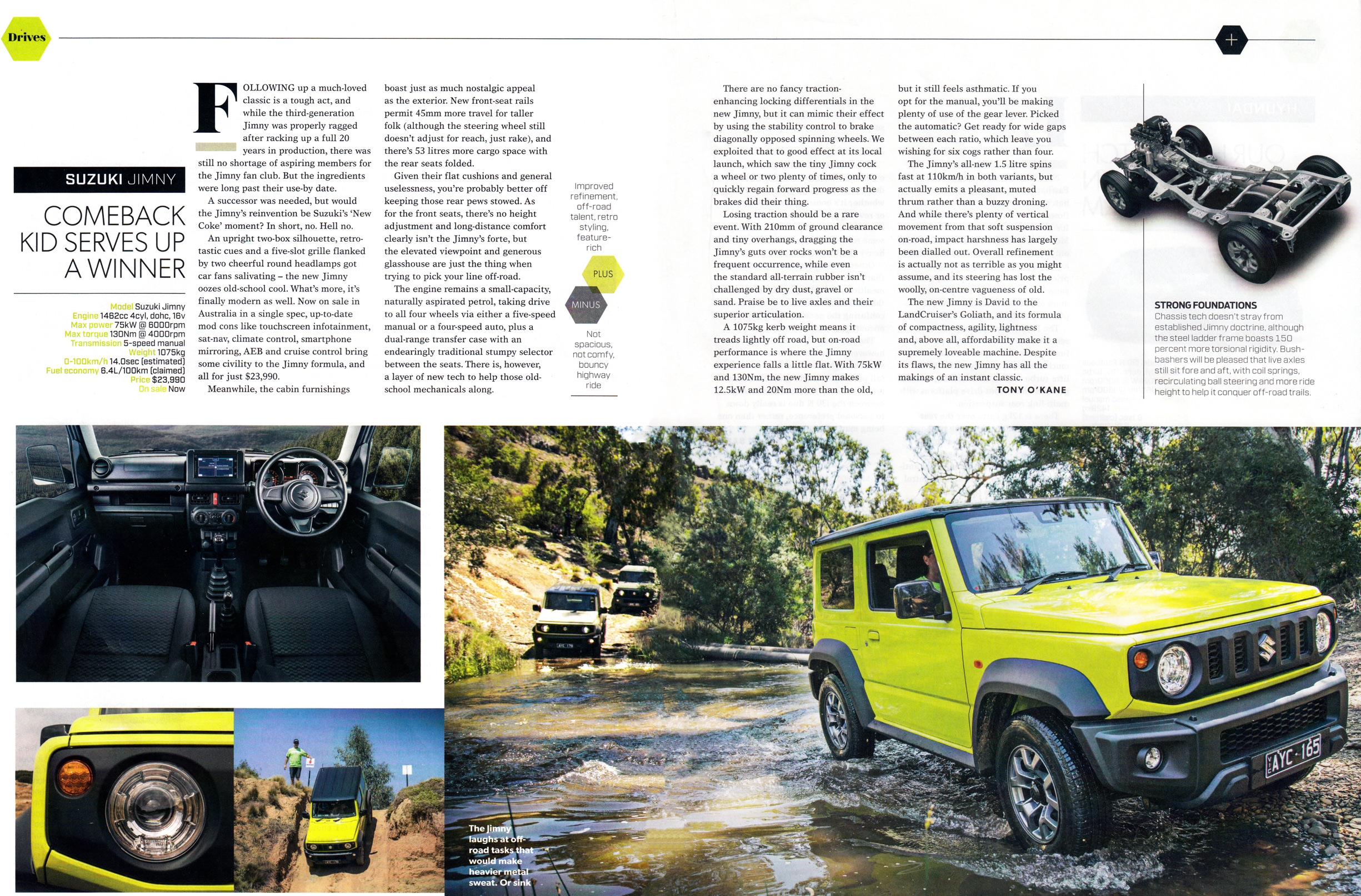
Although this pricing didn’t last long, here’s the launch RRP listing from Wheels as well. Note that the first price rises occurred on RRP in ~Sept 2019, but low availability meant they were already fetching $35 000 as near new used cars.
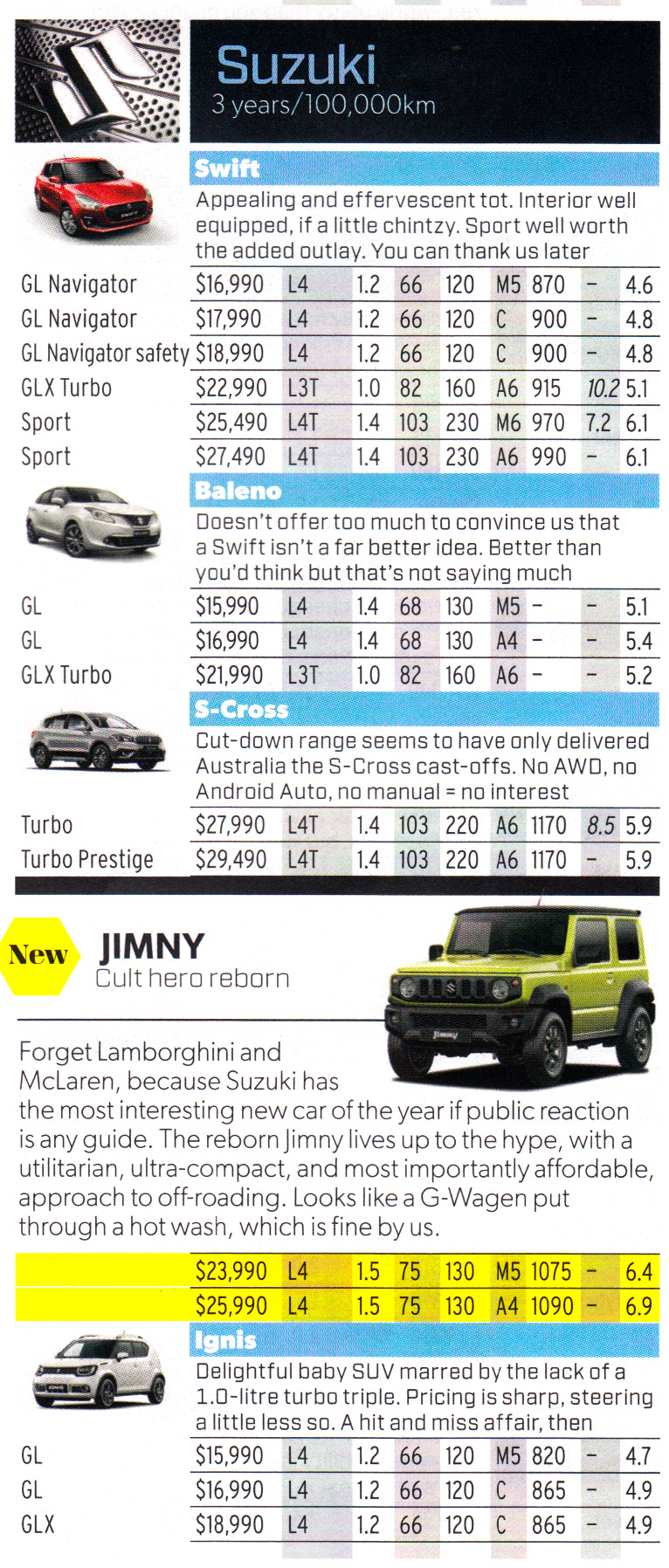
Design and target market
Although these launch articles are fine, they don’t really go into the nitty-gritty of the details of the car. Certainly I found brochures were hard to find when deciding if I wanted one, so I’ve made it my mission to document how certain things chose to be done for the gen4 Jimny.
The most definitive statements about the design and genesis for this generation outside of press articles with limited details come from South African training materials where the target market and the design rationale are spelled out.
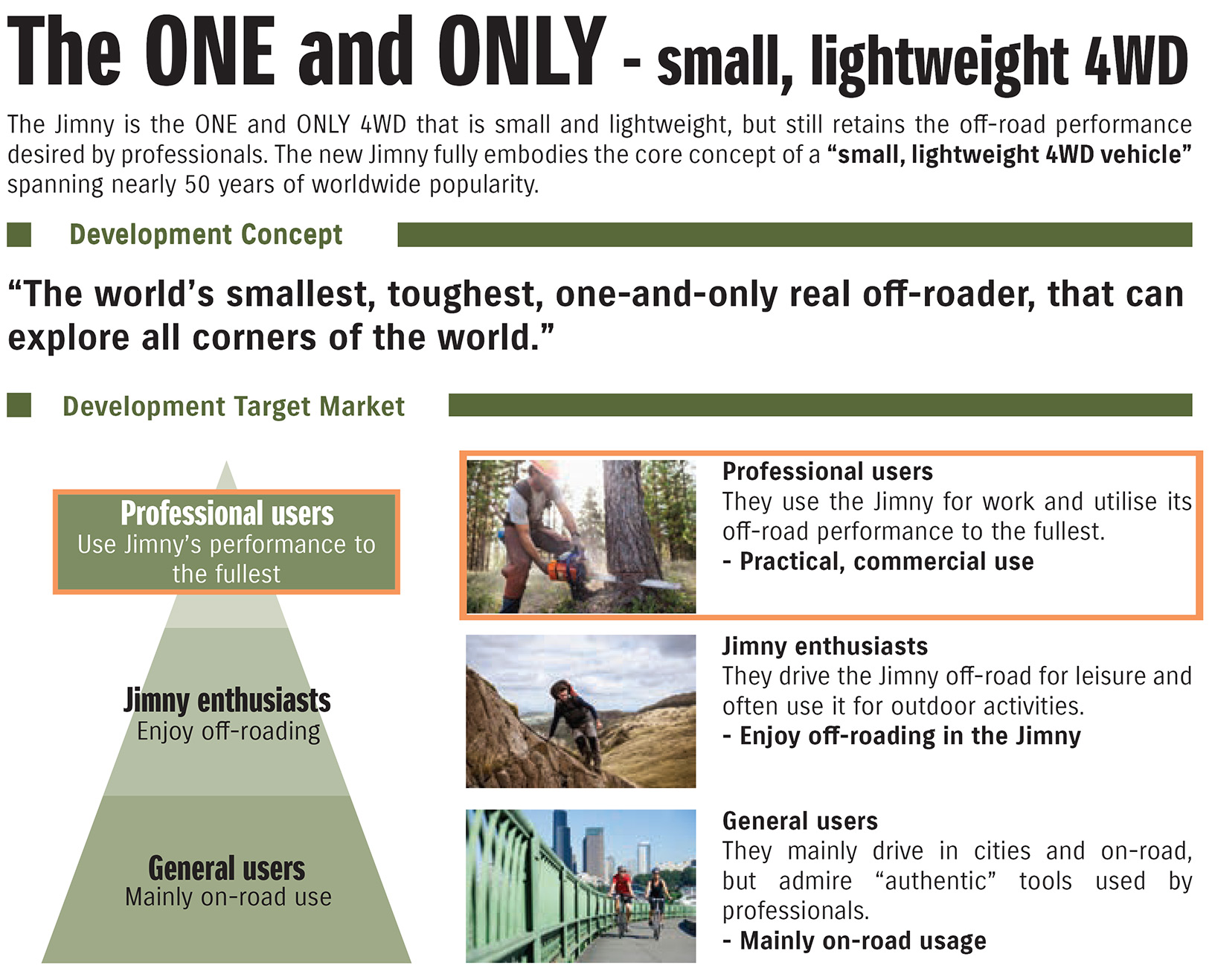
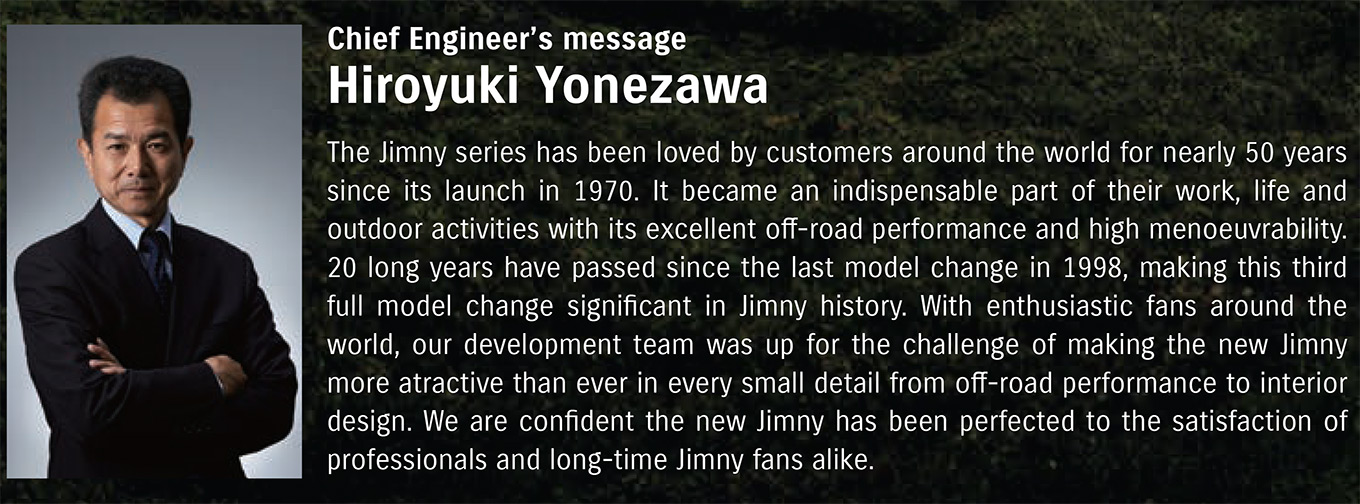
Dimensions compared to generation 3
The dimensions of the new Jimny are revised compared to the 3rd generation. The car is taller, is wider and with a wider track, but shorter. There is more ground clearance, mostly through the provision of newer taller but narrower tyres (195/80-15 instead of 205/70-15), and the revised dimensions coupled with this added ground clearance gives greater approach, departure and ramp-over angles compared to the previous model.
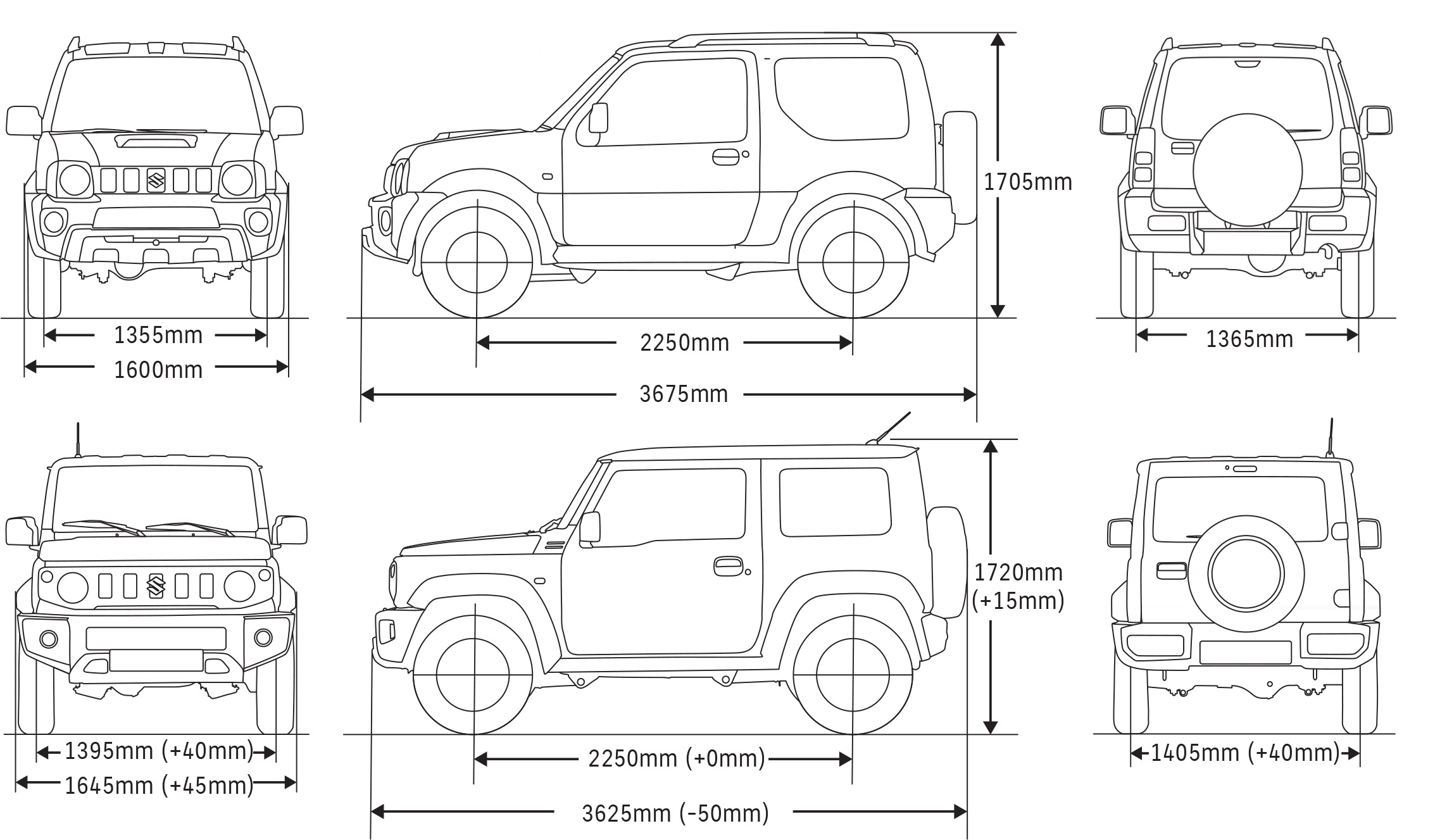

There is an excellent media kit that Suzuki Australia put together that highlight the new model’s features and also the original brochure distributed to dealers for training and sales purposes for the JB74 from Suzuki Queensland. Some key highlights out of these media packages are:
Practical design to match the previous generations
A key element to the 4th generation design are design cues relating to all 3 previous generations.

An example of Suzuki’s so-called ‘practical design’ can be seen in going back to the gutters for the roof rather than load rails. These were incorporated to a) widen the loads that could be carried on the roof and b) also to provide better rain protection getting in and out. I think they succeeded at point a, but point b doesn’t totally bear with my experience of my JB74 in the rain…
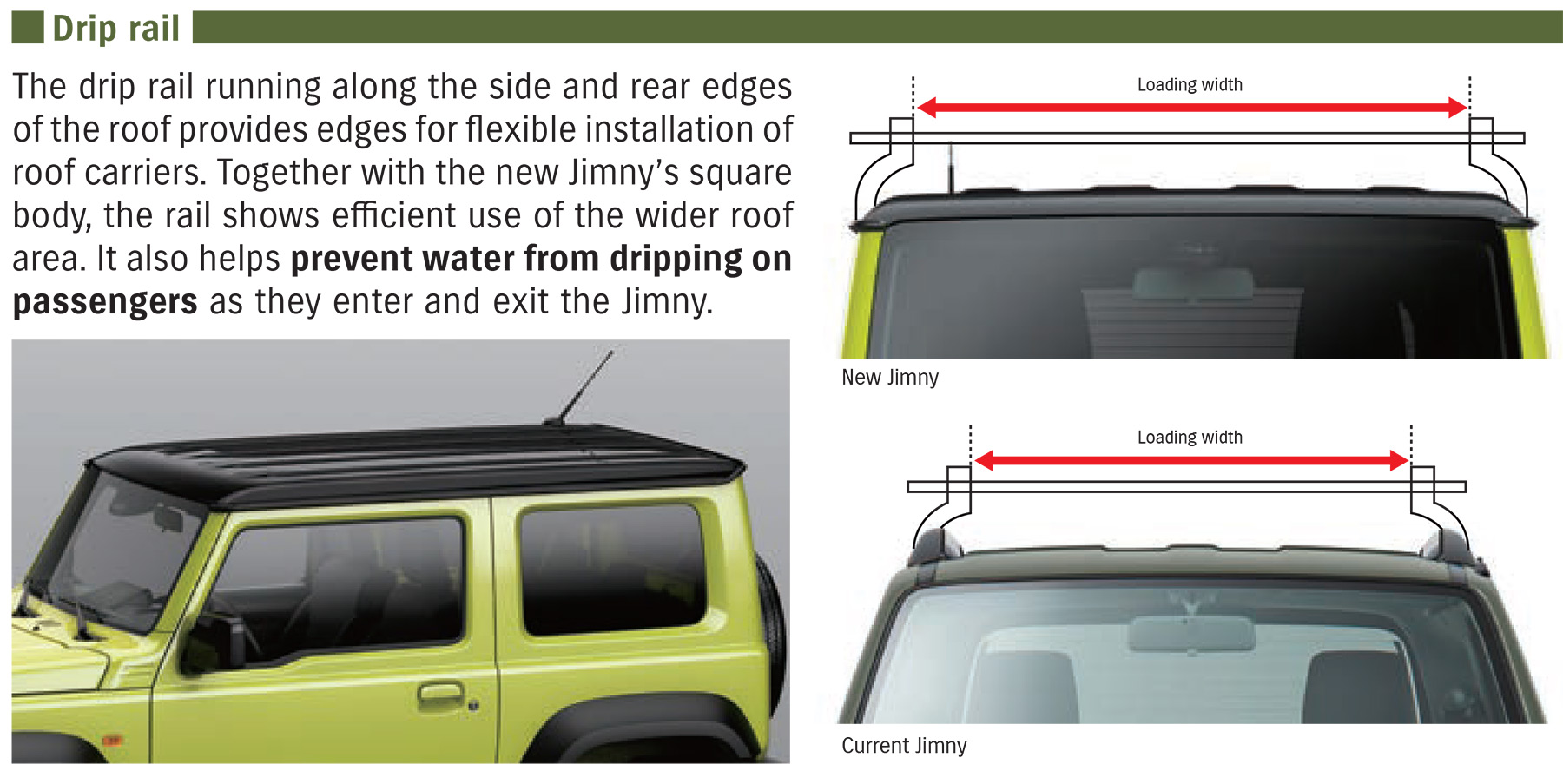
A more practical interior
A key design element referred to in all of the marketing brochures and training material is about how all of the controls are designed to be used with gloves on to ‘assist the professional users’.
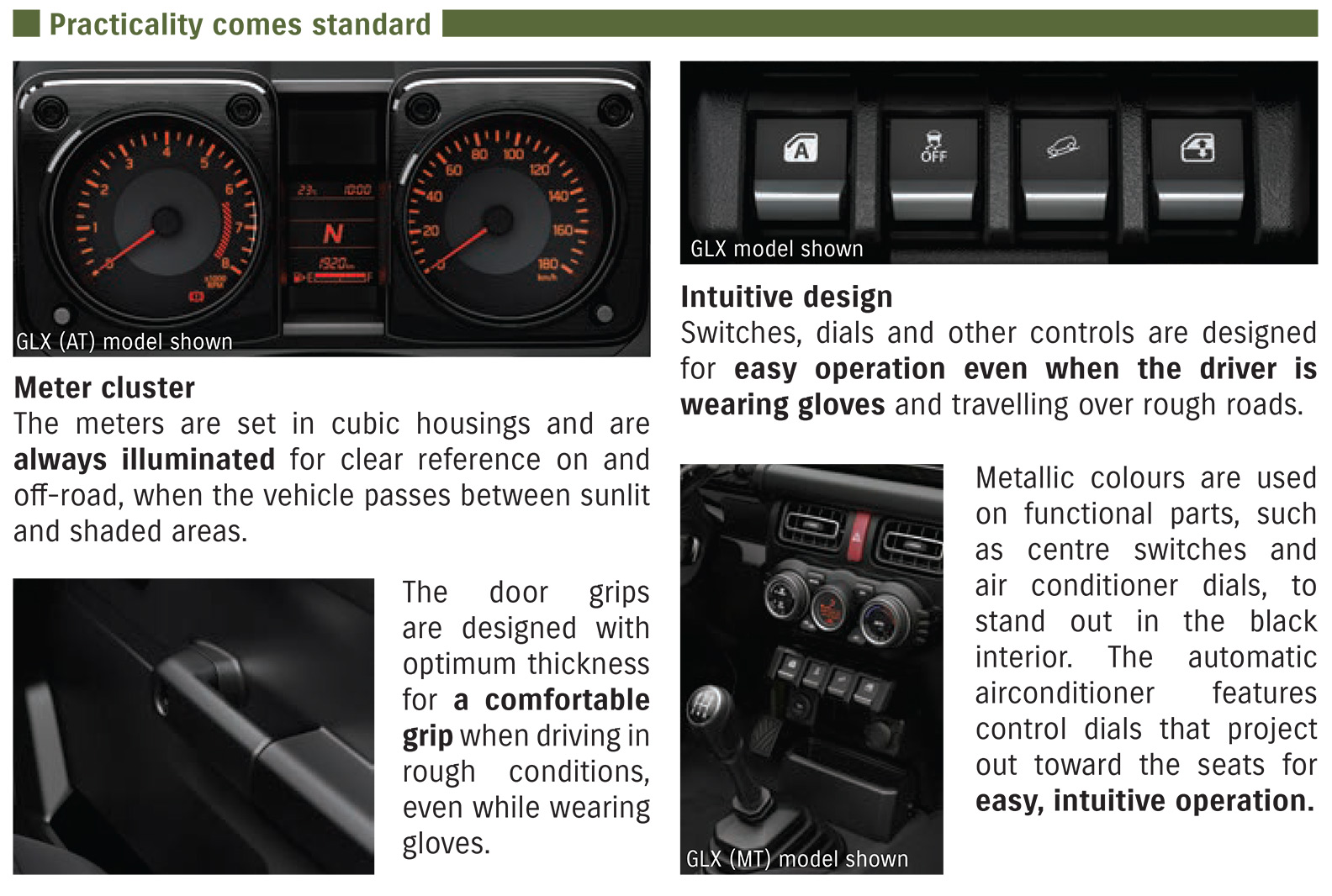
Interestingly, many sales brochures only touch upon the most practical aspects to the new generation: completely lay-flat seats, a departure from the 3rd generation Jimny. Not only do the seats fold flat for luggage loading in the back of the car, making a totally flat surface, but the front seats go further forwards and recline fully to give room to lie down. The extra luggage space is also talked about but little sales info for consumers talks about this or expands upon it. Again, this relies on the South African training material for sales people.
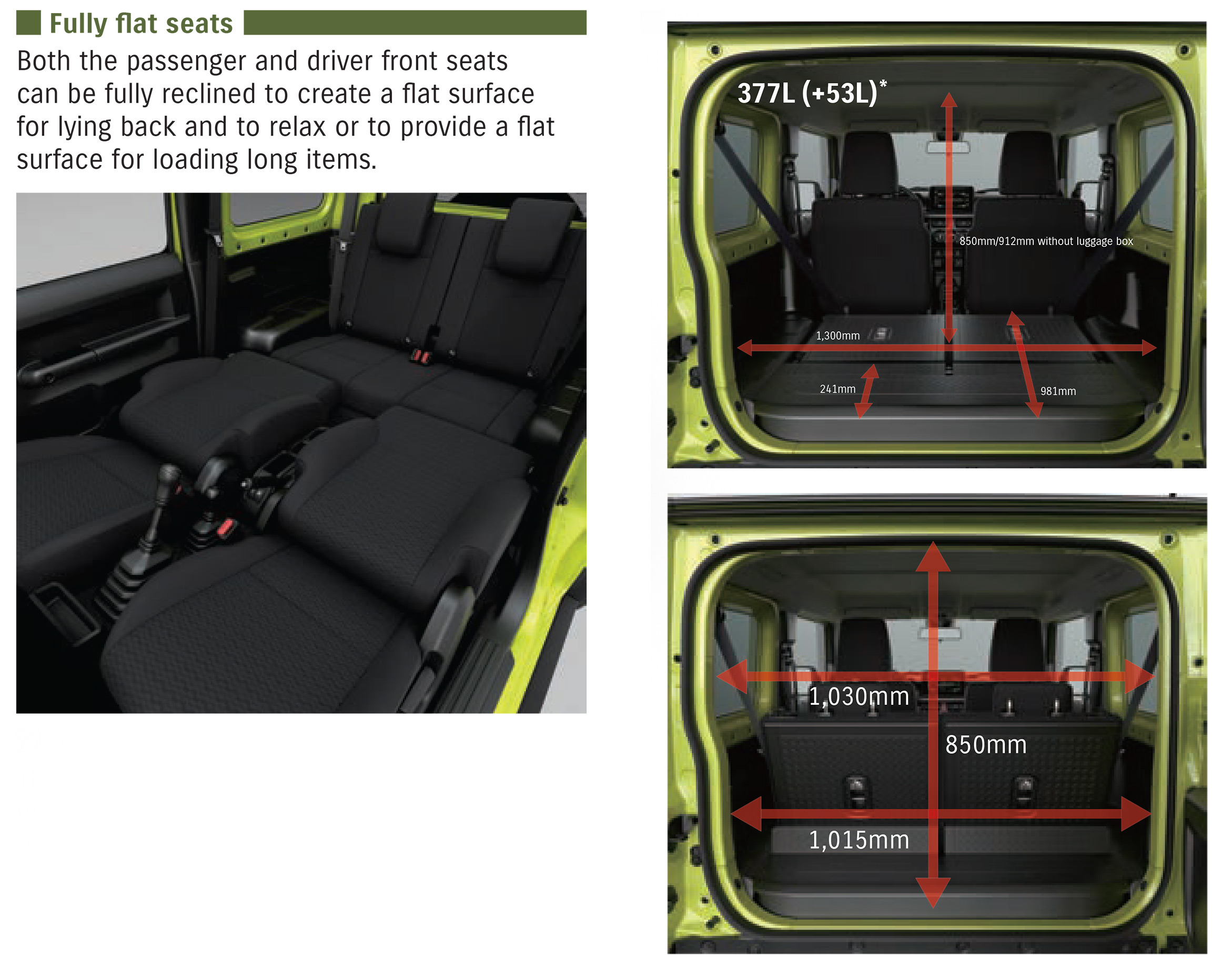
Fold flat seats and also the larger rear door opening and the room available with the rear seats folded down and up out of the South African training material on the New Jimny, 2019
Brochures all alike do point out how the front seats adjust further and with more positions to help people get a good driving position, and the seats are sculpted narrower at the top to make it easier to turn around and look backwards when using the car around town or off road.
Retaining or enhancing off-road performance
Speaking of off-road, a key selling point to Jimnys throughout the ages has been their non-compromise offroad performance. Since the launch of the 3rd generation, all of the small 4wds with ‘real’ offroad capability have been softened, so this was a market segment the 4th generation could fit into.

A large area of the selling point of the generation 4 Jimny are the extra things for offroad, namely the ability to do stronger individual wheel traction control including in low range, and also the newly introduced hill descent control.
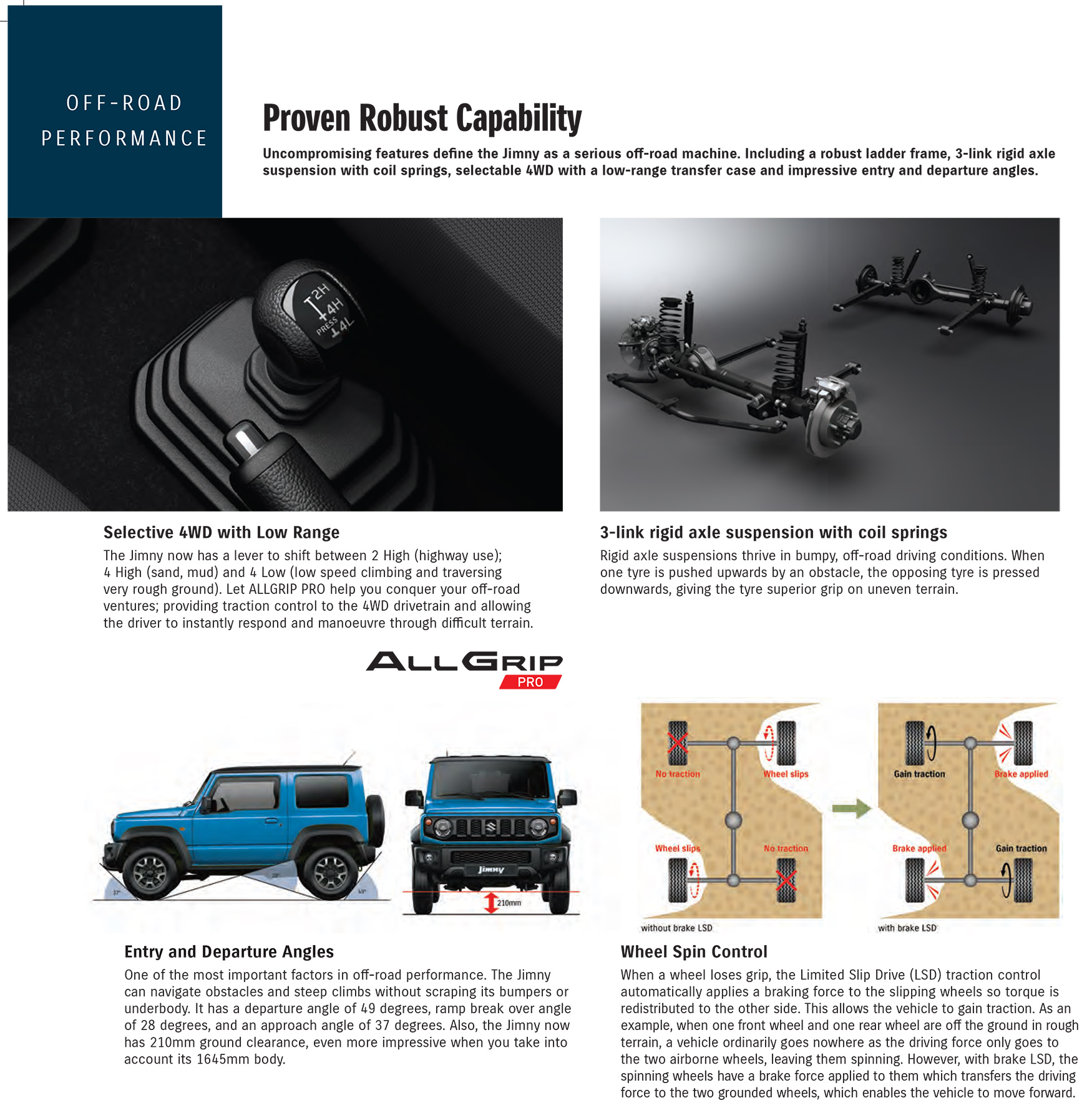
The enhanced brake LSD performance compared to late model gen3’s is demonstrated in this video:
Strengthening underneath
Another component of the revisions made for the gen4 Jimnys is in the strengthening of underneath: both axles are strengthened (and widened), and the chassis has additional crossmembers and revised body mounts as well.
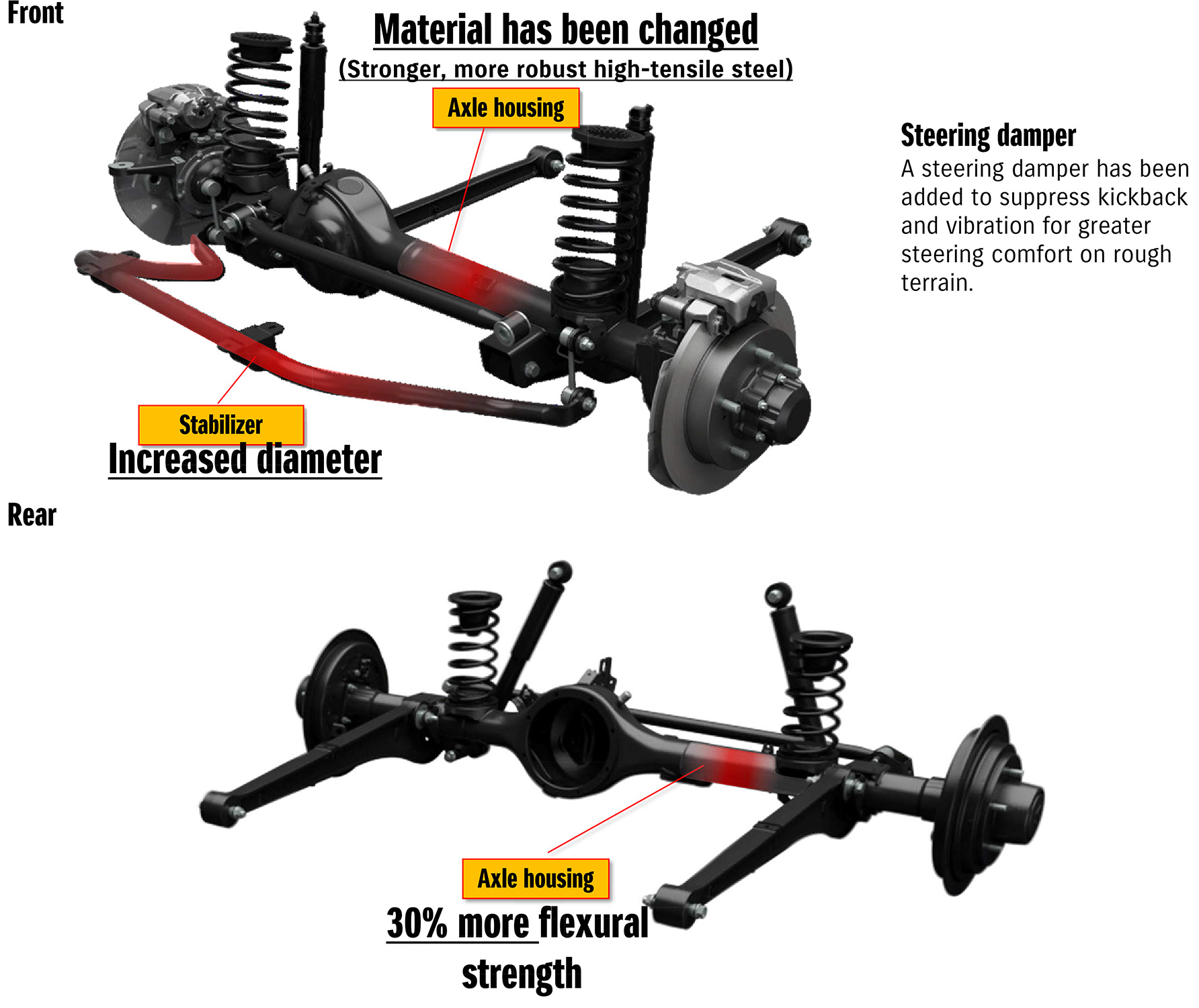
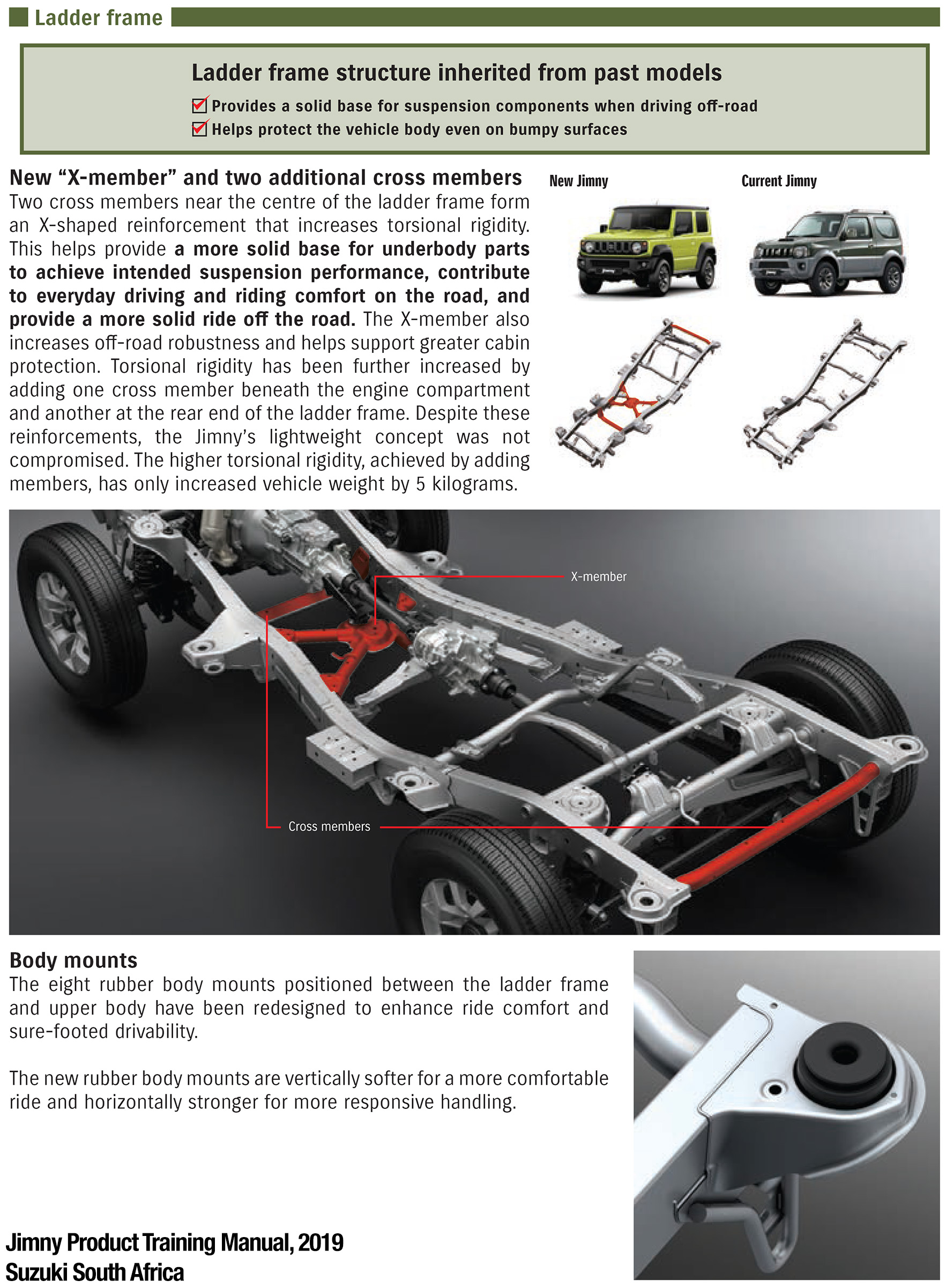
Updated safety features
Although the generation 3 Jimny was the first to have any airbags at all, and introduced more advanced traction control later in its lifespan, the 4th generation Jimny was designed for the inclusion of a number of modern safety features. These features heavily in all advertising and press material relating to the car, e.g. from Suzuki Australia’s main original brochure we have all of the safety features brought to the fore.
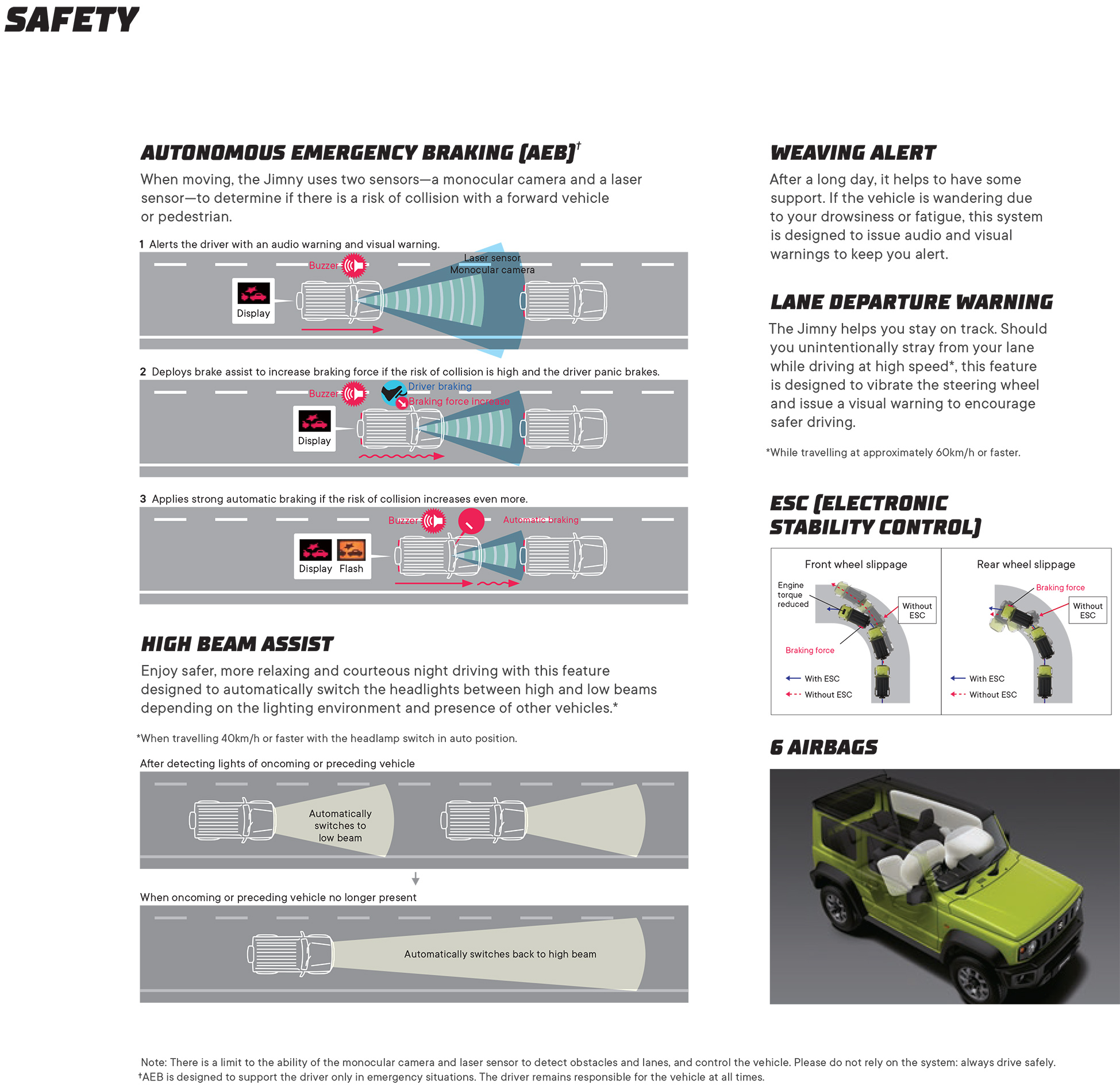
Second-stage manufacturer GVM upgrades
Something I spotted when snooping around on the compliance database in late Sept 2020 was the addition of Ironman as a 2nd stage manufacturer, paving the way for pre-registration GVM upgrades that are all of Australia legal when changing state of registration later. I note the timing here as it wasn’t till after this snooping that the GVM upgrade ended up being reported on.
This is the first time a Jimny has had an official, pre-registration GVM upgrade in Australia. This upgrade, provided through Ironman, massively simplifies re-registering the car in a different state, although does come with a cost over the Ironman lift which I believe to have the same specifications. Sometimes paperwork is incredibly expensive.
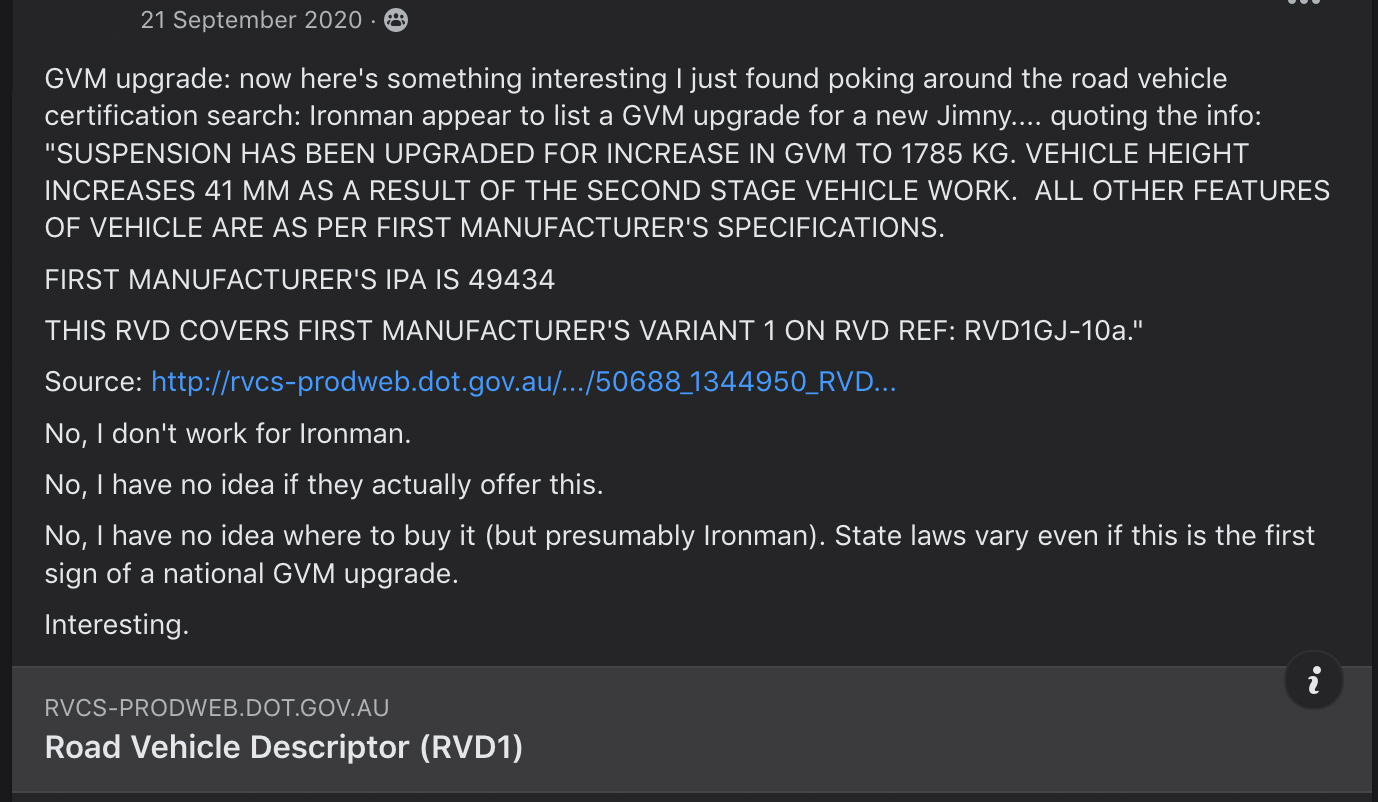

The Ironman press release for this ended up being dated 23 Sept 2020. Hilarious what you can find in databases sometimes!
Approval number for this upgrade is under compliance type approval VTA-050688.
Additonal SSM GVM upgrade(s)
In mid 2023, it was announced that Tough Dog have also gained national approval for a second-stage manufacturer GVM upgrade for the JB74. Their kit takes the GVM out to 1800 kg.
Approval number for this upgrade is VTA-061893.
Sales figures
The 4th generation Jimny has proven to be highly successful on the sales front. By March 2023 it had already overtaken the sales of the 3rd generation Jimny. Considering the 3rd generation Jimny was for sale for 20 years in Australia, and the 4th generation overtook it in just a hair over 4, it certainly has proven to be a more successful model.
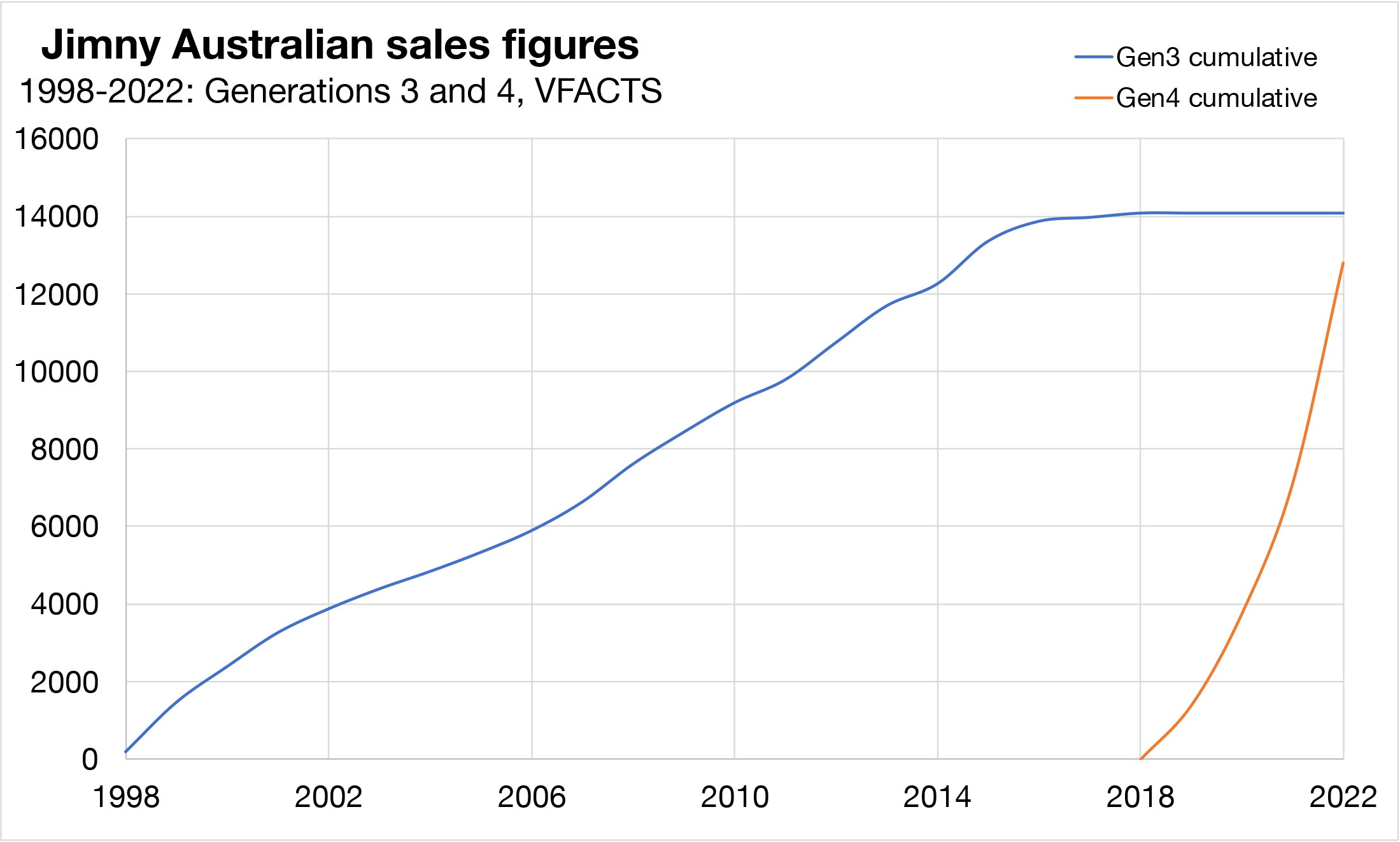
The strength of the 4th generation sales numbers has been such that supply has been stretched even with a rapid increase of supply into Australia and also price rises. Indeed, the popularity has proven to be so overwhelming that, in the face of unprecedented demand that automatic sales were halted late January 2023 by the Australian distributor.
LWB Generation 4
Ever since the popularity of the 4th generation Jimny became apparent, there were rumours of either higher powered or larger variants. Officially released at the start of 2023, and launched in Australia December 2023, the LWB variant is covered in its own writeup.
EV Generation 4 Jimny
Another persistent rumour has been the introduction of an electric Jimny out of Europe. This has been somewhat confirmed with a leaked slide from a presentation showing the upcoming lineup of vehicles.
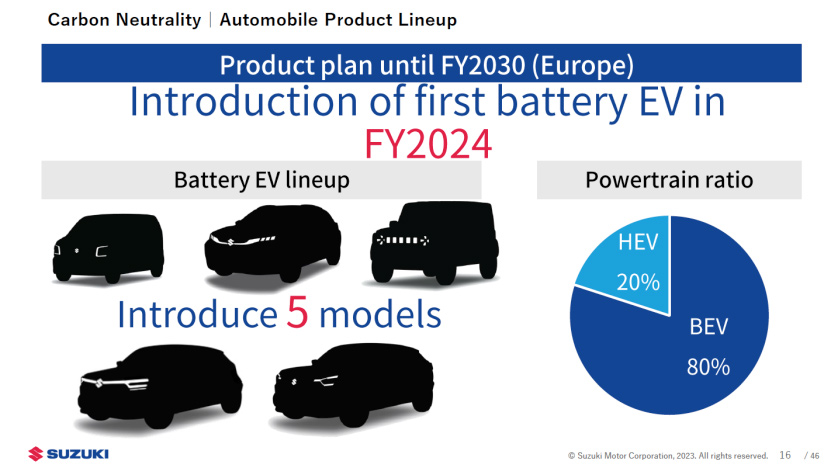
At this stage, very little else is known. Based on the timeline of the 5 door long Jimny, expect endless speculation and wild theories. If you want to make your own guesses, all of the articles speculating on this introduction are based off the Suzuki global strategy 2030 published January 2023.
